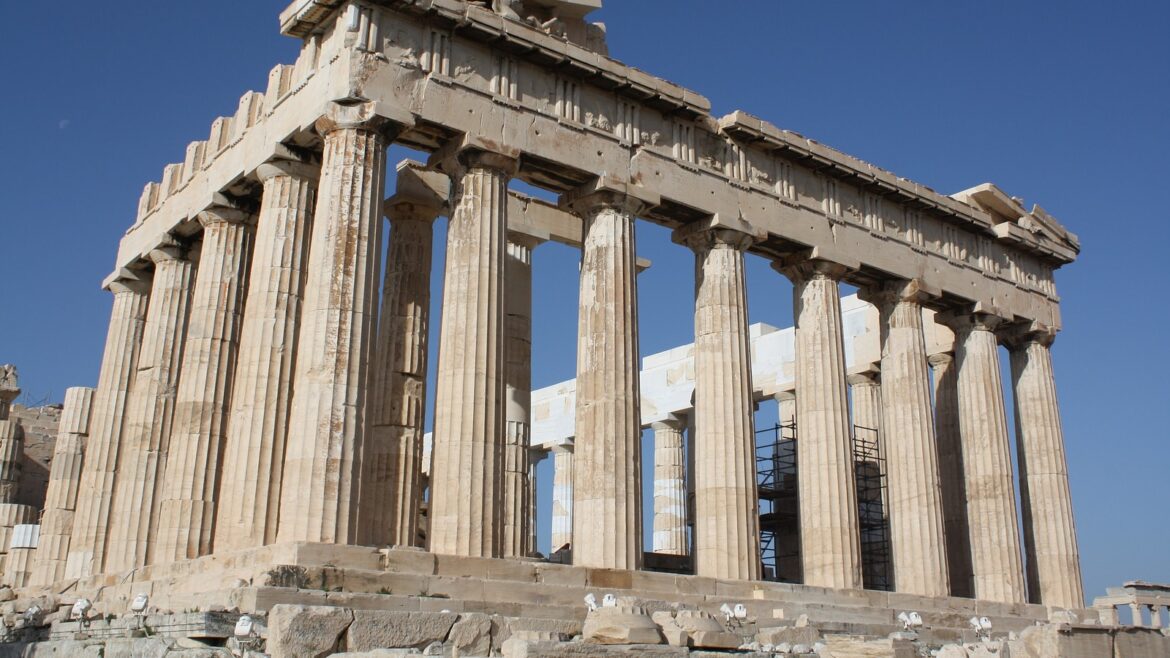The Acropolis of Athens stands as one of the most iconic and significant archaeological sites in the world. Perched on a rocky hill rising about 150 meters above sea level in the heart of Athens, Greece, the Acropolis is a symbol of the cultural and political achievements of ancient Greece, particularly during its Golden Age in the 5th century BCE. Its name, meaning “high city” in Greek, reflects both its physical elevation and its importance as the spiritual and civic center of ancient Athens.
Historical Background
The Acropolis has been inhabited since prehistoric times, but its most famous structures date primarily from the Classical period of ancient Greece. The hill was a natural fortress and religious site long before it became the epicenter of Athenian civilization. In the early Bronze Age, small settlements existed here, but it was during the Mycenaean era (circa 1600–1100 BCE) that the Acropolis began to assume significance as a fortified citadel.
The Classical period, especially the 5th century BCE, marked the Acropolis’s transformation into a monumental complex under the leadership of Pericles, the Athenian statesman. After the Persian invasions of 480 BCE, during which much of the original Acropolis was destroyed, Pericles initiated an ambitious rebuilding program. This construction gave rise to the masterpieces of architecture and art that have since become synonymous with ancient Greek civilization.
Key Monuments of the Acropolis
The Acropolis is home to several key structures, each with its own historical, religious, and artistic significance.
1. The Parthenon
The Parthenon is undoubtedly the most famous building on the Acropolis and a masterpiece of Doric architecture. Constructed between 447 and 432 BCE, it was dedicated to Athena Parthenos, the virgin goddess and patron deity of Athens. Designed by architects Iktinos and Kallikrates, and adorned with sculptures by the great sculptor Phidias, the Parthenon epitomizes the ideals of harmony, proportion, and beauty.
The temple housed a massive gold and ivory statue of Athena, also crafted by Phidias. The Parthenon’s sculptural decoration, including the frieze, metopes, and pediments, depicts mythological scenes such as the Panathenaic procession, the battle between the Lapiths and Centaurs, and the birth of Athena herself. These artworks are considered some of the finest achievements of Classical Greek art.
2. The Erechtheion
The Erechtheion is another important temple on the Acropolis, built between 421 and 406 BCE. Unlike the Parthenon, the Erechtheion has an asymmetrical design, reflecting the uneven terrain and its multiple religious functions. It was dedicated to both Athena and Poseidon, honoring a mythical contest between the two gods over the patronage of Athens.
One of the Erechtheion’s most famous features is the Porch of the Caryatids, where six elegantly sculpted female figures serve as supporting columns. These caryatids exemplify the grace and sophistication of Classical sculpture.
3. The Propylaea
The Propylaea serves as the monumental gateway to the Acropolis. Completed around 432 BCE, it was designed by the architect Mnesicles. The structure combines Doric and Ionic architectural elements and was meant to impress visitors as they entered the sacred precinct. The Propylaea also served a practical purpose as a controlled entrance to the religious complex.
4. The Temple of Athena Nike
This small temple, built around 427–424 BCE, honors Athena Nike, the goddess of victory. Located on the southwestern edge of the Acropolis, it is an Ionic temple known for its delicate proportions and the famous frieze depicting historical battles such as the Battle of Marathon. It symbolized Athens’ military success and the protection of the city.
Religious and Cultural Significance
The Acropolis was primarily a religious center, serving as the focal point for worship of Athena, the city’s patron deity. The Panathenaic Festival, one of the most important religious and civic events in Athens, culminated in a grand procession up to the Acropolis, where sacrifices and offerings were made. This festival celebrated Athena’s birthday and symbolized the unity and pride of the Athenian people.
The religious significance of the Acropolis was deeply intertwined with Athens’ identity and political power. It was a symbol of Athenian democracy, cultural achievement, and military strength. The grandeur of the Acropolis and its temples projected Athens’ status as the leading city-state of ancient Greece.
Artistic and Architectural Legacy
The architectural and artistic innovations introduced on the Acropolis had a lasting impact on Western art and architecture. The Parthenon, for example, is celebrated for its perfect proportions and use of optical illusions—such as slight curvatures in the columns and steps—to counteract visual distortion and create an impression of perfection.
The sculptures and reliefs of the Acropolis represent the pinnacle of Classical Greek art, characterized by naturalism, idealized human forms, and dynamic movement. These artistic achievements have inspired countless generations of artists and architects throughout history.
Later History and Preservation
Following the Classical period, the Acropolis underwent many changes. It was converted into a Christian church in late antiquity, then into a mosque during the Ottoman period. The Parthenon also suffered significant damage during a Venetian siege in 1687 when an explosion destroyed much of the building.
In the 19th and 20th centuries, archaeological excavations and restoration efforts aimed to preserve the Acropolis and its monuments. Today, the site is a UNESCO World Heritage Site and one of the most visited tourist attractions in Greece.
Modern conservation projects continue to protect the Acropolis from environmental damage and the wear of time, while also allowing scholars to study its history in greater detail.
The Acropolis Today
Today, the Acropolis stands not only as a major tourist destination but also as a powerful symbol of ancient Greek civilization, democracy, and cultural achievement. Visitors from around the world come to walk among the ruins, imagining the grandeur of ancient Athens and experiencing a connection to a civilization that laid the foundations for much of Western culture.
The site’s museums, including the Acropolis Museum located nearby, house many original sculptures and artifacts, providing deeper insight into the religious, artistic, and social life of ancient Athens.

